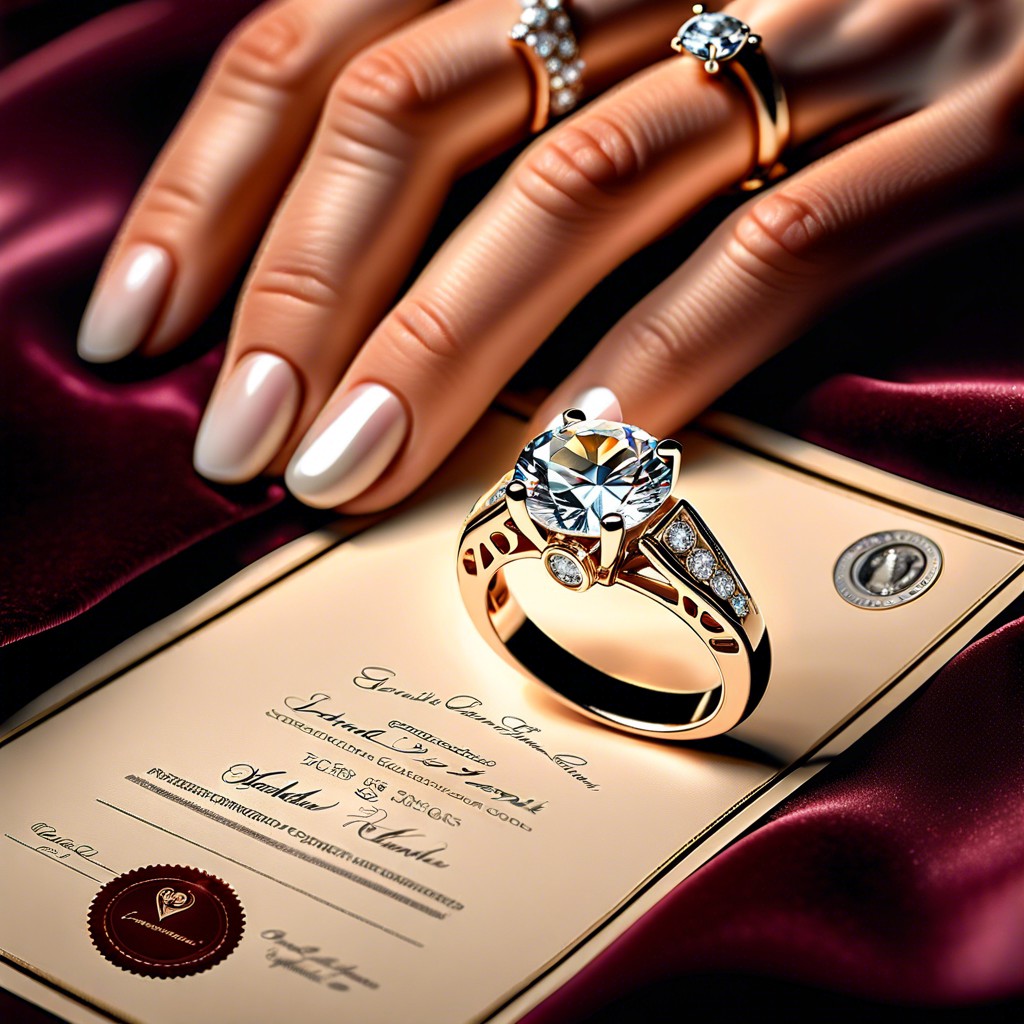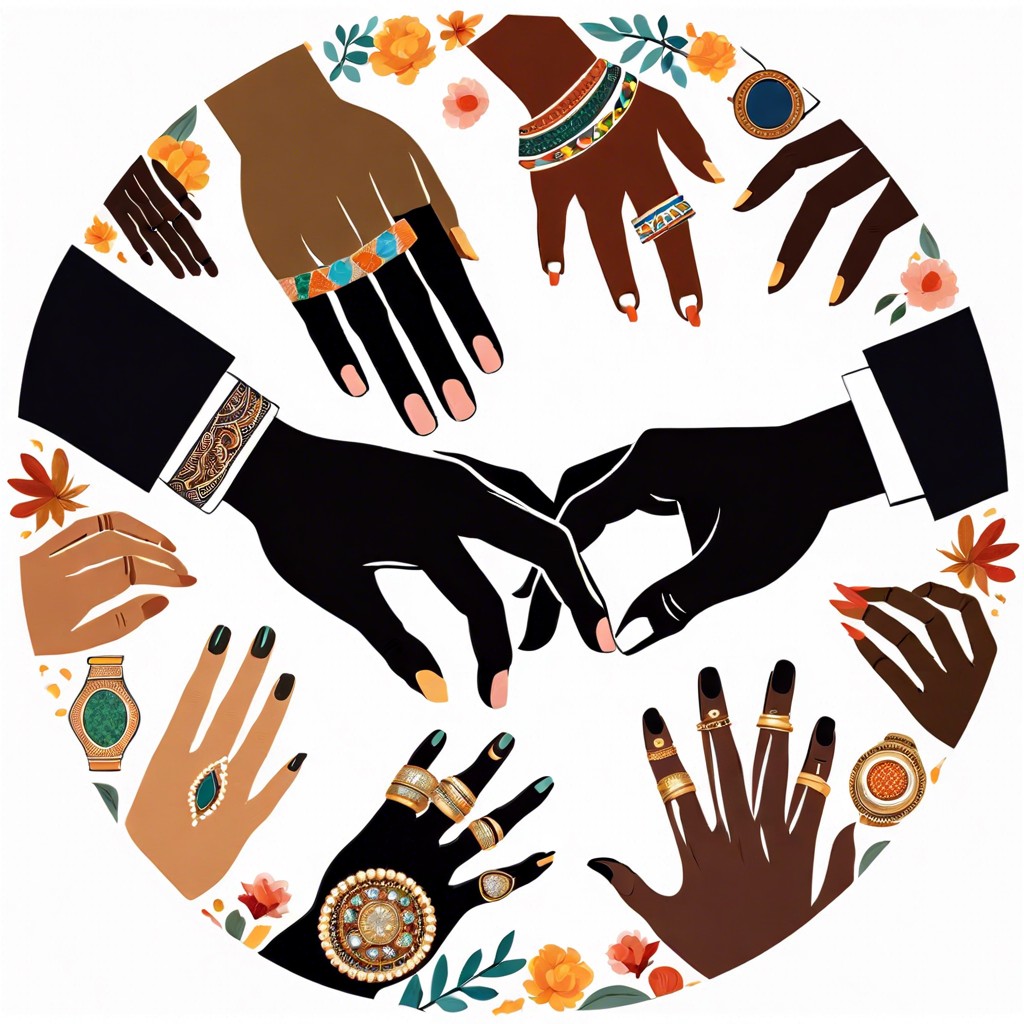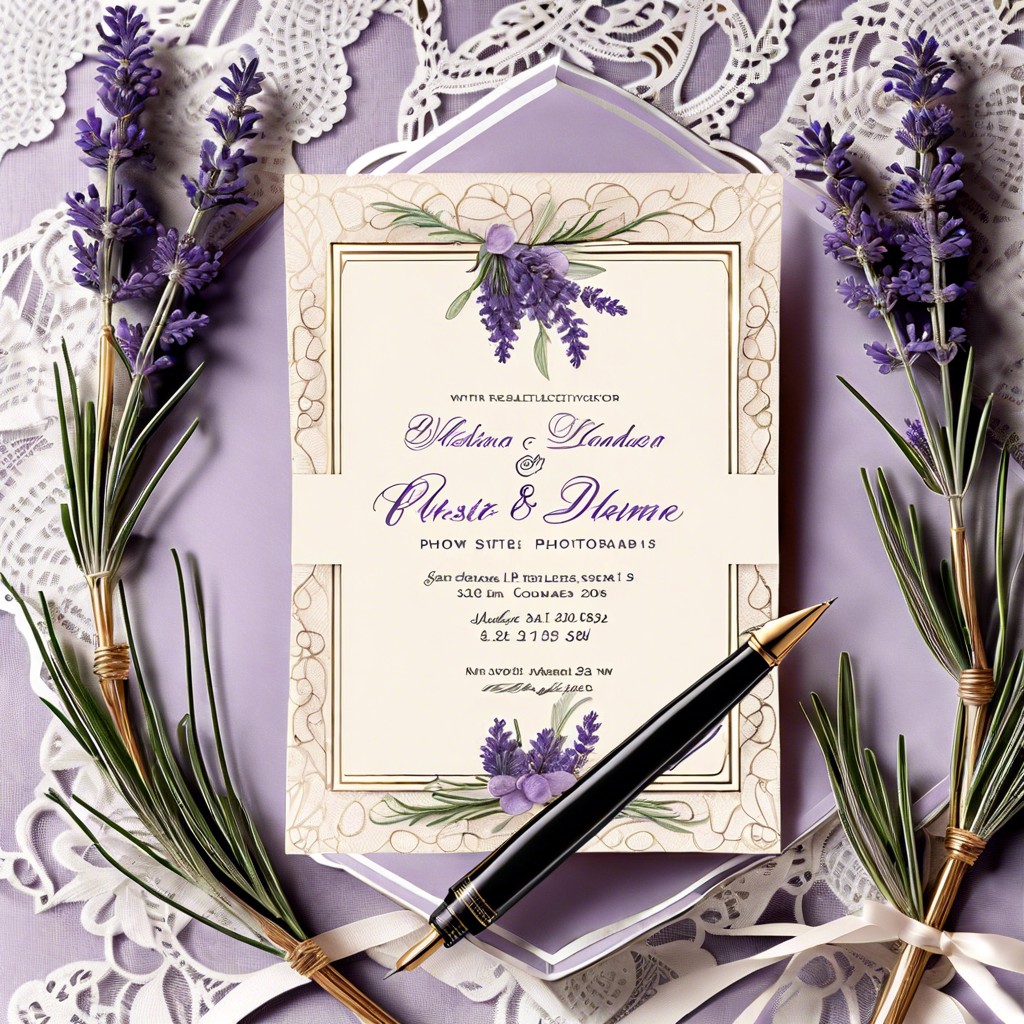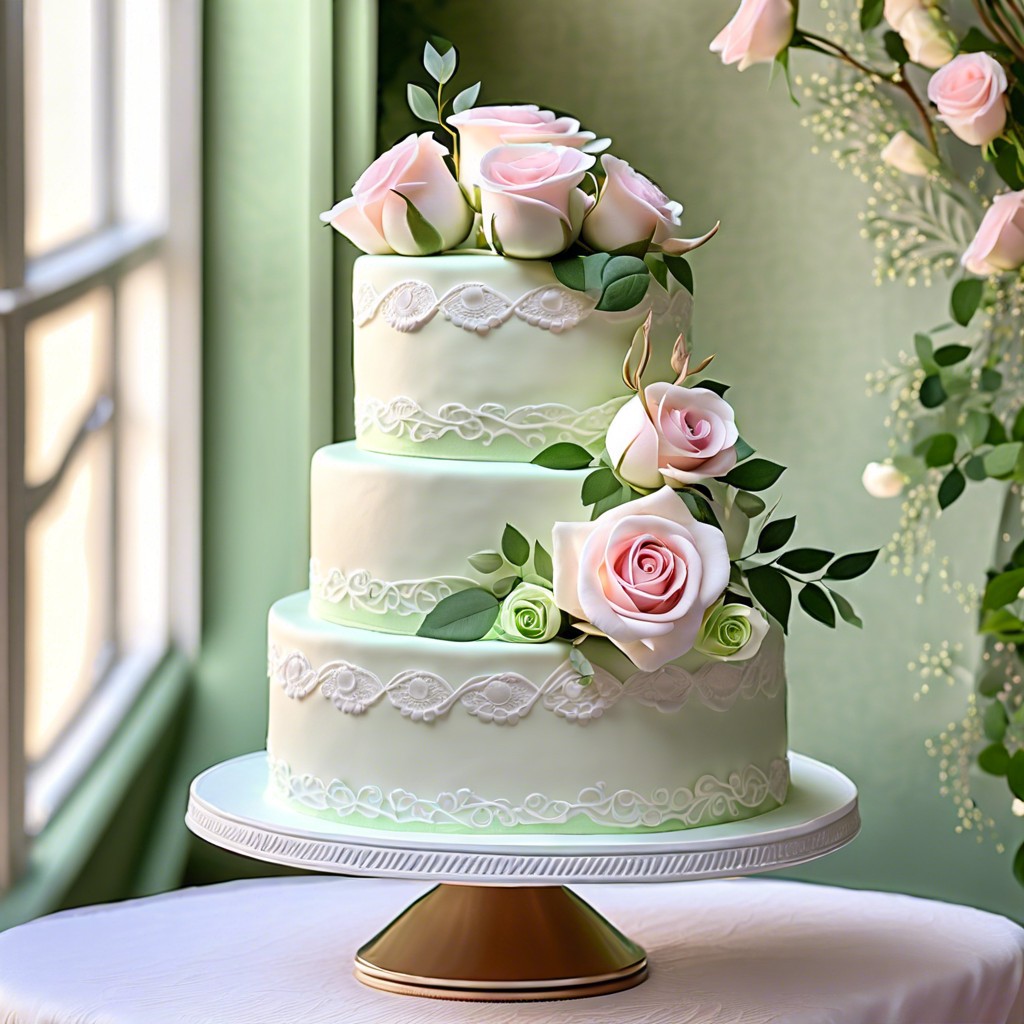Learn the steps to sell an engagement ring efficiently and at the best possible price.
Key takeaways:
- Research your ring thoroughly including the 4 Cs and designer stamp.
- Determine the value of your ring based on carat, cut, clarity, and color.
- Gather important documents like purchase receipt and appraisal reports.
- Consider a market valuation and appraisal to set a realistic price.
- Prepare your ring for sale with cleaning, documentation, and quality photos.
Research Your Ring

Dig deep into the details of your engagement ring before you put it on the market. Knowing the 4 Cs—carat, color, clarity, and cut—is a good starting point. High-quality diamonds shine not only through their weight in carats but also their absence of color, speckles of impurities (or lack thereof!), and the precision with which they’re cut.
Not all rings come with a diamond. If yours features a different gem, familiarize yourself with its characteristics, too. Sapphires, rubies, emeralds — they all have grading systems.
Does your ring have a designer stamp? Brands like Tiffany & Co. and Cartier could fetch a higher price. A simple Google search or a peek at your ring’s certificate (if you have one) could provide clues.
Recall the metal’s worth. Whether it’s 18k gold, platinum, or another material, it can affect the value. A quick review of the current market price for the metal will give you a baseline.
Know the ring’s history if it’s an heirloom or vintage piece. A story can add allure and potentially elevate its value. Collectors often prize unique backstories.
Arm yourself with knowledge to set the proper expectations and notch a successful sale. Remember, knowledge is power, especially in high-stakes jewelry deals.
Determining the Value of Your Engagement Ring
Before you put your engagement ring out there, you’ll want to get cozy with its value. Think of it like setting the right price tag on a vintage car—it’s all about the details. Dive into the ‘four Cs’: carat, cut, clarity, and color. These sparkly details directly influence your ring’s worth.
Carat weight is like the horsepower of the gem world – the higher the carat, the more your ring can fetch. But don’t be fooled; size isn’t everything. A shapely cut can make your gem gleam brighter than a disco ball, upping its allure and its price.
Next, examine clarity. This is where you look for blemishes and inclusions—kind of like finding the quirks in a charming antique. Even the tiniest imperfections can sway the price, so get those eyes peeled.
Color is another biggie. Here’s where we go by the less-is-more rule—the clearer, the better. Diamonds are graded from colorless to light yellow. The less color, the more your ring might shine in the market.
Lastly, the ring’s setting and metal type are the cherry on top. Platinum and gold are high in the glam stakes, boosting your ring’s value. Think about style too. Classic designs have a timeless appeal, while something en vogue might woo those modern trendsetters.
Remember, a little legwork now can lead to a sparkling sale later. So, roll up your sleeves and befriend every little detail. They’re the secret handshake to making sure you clock your ring’s real worth.
Get Your Documents in Order
Gathering your ring’s documents is like assembling a superhero team for your jewelry—each plays a vital role in proving its worth. Think of the original purchase receipt as the leader. It vouches for your ring’s origin and initial cost. Appraisal reports come in next, flexing their muscles with detailed descriptions of your ring’s features and value, a powerful asset for potential buyers.
Your ring might also come with a grading report, especially if it’s a diamond. This is the brainy member of the team, offering a scientifically analyzed breakdown of the gem’s quality and characteristics. And don’t forget the warranty or authenticity certificates; they’re the trusty sidekicks confirming your ring’s pedigree.
With these documents, you paint a picture of transparency and trust for buyers. It’s like having a dossier that says, “This ring? It’s the real deal.” A complete paper trail can also help if you choose to sell through a jeweler or consignment shop, as it can expedite the process and potentially fetch a better price. No need to dig around the attic or basement last-minute—prep these papers early and you’re golden.
Consider a Market Valuation and Appraisal
Having your engagement ring appraised by a certified gemologist gives you a clear estimation of its worth. Think of this step as giving your ring its resume before it heads out into the job market. The appraisal reflects the retail value, which is helpful for insurance purposes, but when selling, the offer you’ll receive will likely be less than that amount.
On the flip side, a market valuation is the ballpark figure you can expect from a buyer. It assesses how much your ring will fetch based on current market trends, similar sales, and the overall demand for pieces like yours. It’s a reality check that sets the stage for a realistic price tag that won’t leave your ring gathering dust or your expectations hanging high and dry.
Checking out recently sold rings similar to yours can also give a practical insight. You’ll get a sense of what the market is willing to pay, and adjust your expectations accordingly. Remember, the goal is to find a sweet spot: a price that feels fair to you yet is attractive enough to catch a buyer’s eye.
Prepare Your Engagement Ring for Sale
Polishing to perfection is key; a sparkly ring sells faster. Take it to a professional jeweler for cleaning, or if you’re savvy, use a homemade solution of warm water and dish soap to let it shine.
Documentation boosts buyer confidence. Have your ring’s original box and any certificates of authenticity ready. These small details can significantly increase its appeal and prove its legitimacy.
High-quality photos make a difference. Snap images that show off the ring’s brilliance from various angles in natural light. Avoid cluttered backgrounds; a simple, elegant setting will make the gem stand out.
Set a realistic price by comparing similar sold listings. Overpricing can lead to prolonged sale time, underpricing means you’ll lose out. Strike a balance based on market research and professional appraisals.
Choose your sales avenue wisely. Online marketplaces, auction houses, or consignment shops have their pros and cons. Weigh them carefully considering fees, audience reach, and how much control you want over the selling process.
Be prepared for negotiation. Most buyers will haggle, so know your lowest acceptable price. Stick to your guns but keep an open mind – it’s a balancing act between getting a fair price and making the sale.



